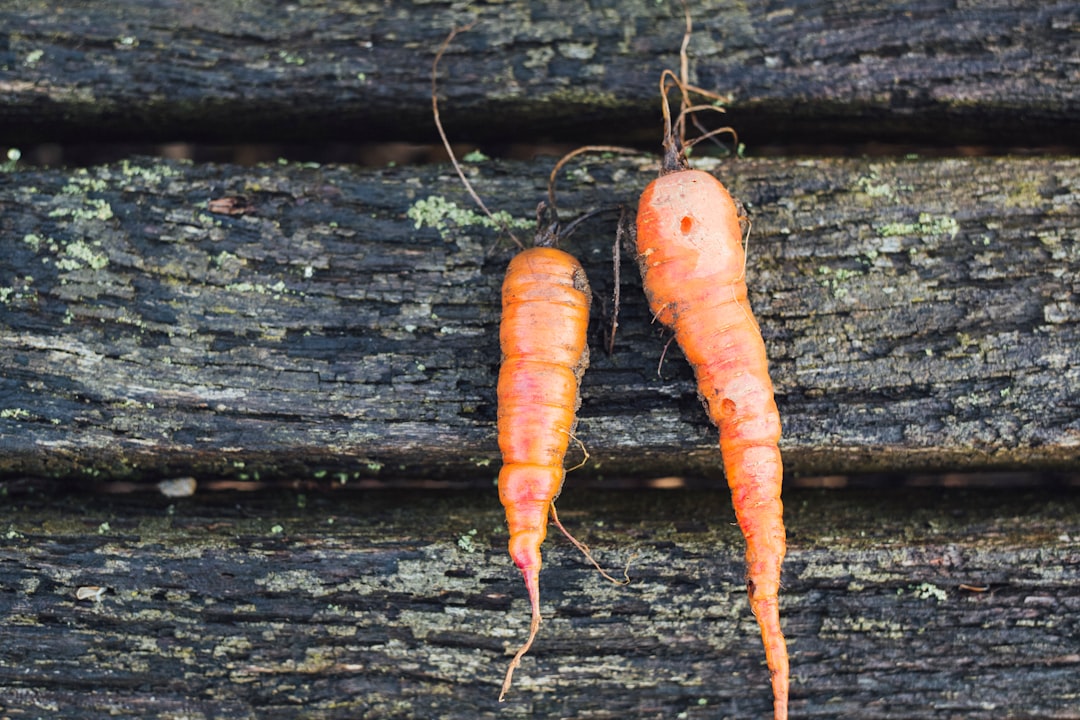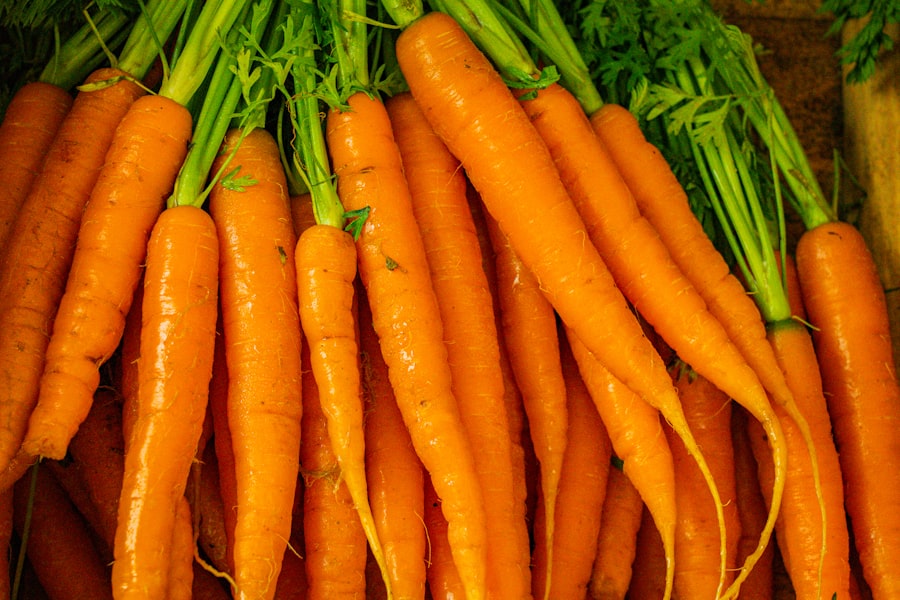Harvesting Carrots: The Best Time to Pick

Carrots are a versatile and nutritious vegetable that can be enjoyed in a variety of dishes. Harvesting your own carrots not only allows you to have a fresh and organic supply of this root vegetable, but it also gives you the satisfaction of growing your own food. In this article, we will explore the process of harvesting carrots, from understanding their growth cycle to identifying when they are ready for harvest. We will also discuss the tools and techniques needed for harvesting, as well as best practices for storing the harvested carrots.
Key Takeaways
- Carrots are a popular root vegetable that can be harvested in a variety of ways.
- Understanding the growth cycle of carrots and the factors that affect their growth is important for determining the best time to harvest.
- Signs that carrots are ready for harvest include their size, color, and texture.
- Preparing for carrot harvesting involves gathering the necessary tools and equipment and using proper techniques to avoid damaging the crop.
- Storing harvested carrots in a cool, dry place can help extend their shelf life and preserve their flavor.
Understanding the Growth Cycle of Carrots
Before we delve into the process of harvesting carrots, it is important to understand their growth cycle. Carrots go through several stages of growth, starting from seed germination to maturity. The first stage is seed germination, where the carrot seeds sprout and develop into seedlings. This stage usually takes around 10 to 14 days.
Once the seedlings have emerged, they enter the vegetative growth stage. During this stage, the carrot plants focus on developing their foliage and establishing a strong root system. This stage can last anywhere from 60 to 80 days, depending on the variety of carrot.
The final stage is maturity, where the carrots are fully grown and ready for harvest. The time it takes for carrots to reach maturity varies depending on the variety and growing conditions. On average, it takes around 70 to 80 days for most carrot varieties to reach maturity.
Factors Affecting the Best Time to Pick Carrots
Timing is crucial when it comes to harvesting carrots, as it directly affects their flavor and texture. Several factors can affect the timing of carrot harvesting. One important factor is the variety of carrot being grown. Different varieties have different maturation times, so it is important to know the specific characteristics of the variety you are growing.
Another factor that affects timing is the growing conditions. Carrots prefer cool weather and thrive in temperatures between 60 to 70 degrees Fahrenheit. If the weather is too hot, the carrots may become woody and develop a bitter taste. On the other hand, if the weather is too cold, the carrots may take longer to mature.
Soil conditions also play a role in determining the best time to harvest carrots. Carrots prefer loose, well-drained soil that is free from rocks and clumps. If the soil is compacted or contains too much clay, it can hinder the growth of the carrots and affect their quality.
How to Identify When Carrots are Ready for Harvest
| Indicator | Criteria |
|---|---|
| Size | Carrots should be at least 1/2 inch in diameter at the top |
| Color | Carrots should be bright orange in color |
| Texture | Carrots should be firm and crisp |
| Leaves | Carrot leaves should be fully grown and healthy |
| Days to maturity | Carrots should be harvested 60-75 days after planting |
Knowing when to harvest carrots is crucial for optimal flavor and texture. There are several signs that indicate that carrots are ready for harvesting. The first sign is the size of the carrot. Most carrot varieties reach maturity when they are around 1 inch in diameter at the top.
Another sign to look for is the color of the carrot tops. When the carrot tops start to turn yellow or brown, it is a good indication that the carrots are ready for harvest. However, it is important not to wait too long after this stage, as overripe carrots can become tough and lose their sweetness.
You can also gently pull back the soil around the base of the carrot to check its size and color. If the carrot has reached its desired size and has a vibrant orange color, it is ready for harvest.
Tips for Preparing Carrots for Harvesting
Before harvesting carrots, there are a few steps you can take to ensure optimal flavor and texture. One important step is to water the carrots thoroughly a day or two before harvesting. This helps loosen the soil and makes it easier to pull out the carrots without damaging them.
It is also important to remove any weeds or debris from around the carrot plants before harvesting. Weeds can compete with the carrots for nutrients and water, affecting their growth and quality. Removing weeds also makes it easier to see and access the carrots.
If you are growing carrots in rows, you can use a hoe or a rake to gently loosen the soil around the carrots before harvesting. This helps prevent any damage to the carrots when pulling them out of the ground.
Tools and Equipment Needed for Harvesting Carrots

Harvesting carrots requires minimal tools and equipment. The most important tool you will need is a garden fork or a spade. These tools are used to gently lift the carrots out of the ground without causing any damage. It is important to choose a fork or spade with sharp tines or blades to make the process easier.
If you are growing carrots in containers or raised beds, a hand trowel or a garden fork can be used to carefully dig around the base of the carrot and lift it out of the soil.
Techniques for Harvesting Carrots
There are several techniques for harvesting carrots, each with its own pros and cons. One common technique is to gently pull the carrot tops while applying pressure to loosen the soil around the carrot. Once the carrot is loose, you can carefully lift it out of the ground using a garden fork or a spade.
Another technique is to use a garden fork or a spade to dig around the base of the carrot and lift it out of the soil. This technique is especially useful if you are growing carrots in compacted soil or if the carrots are tightly packed together.
Regardless of the technique you choose, it is important to handle the carrots with care to avoid any damage. Carrots can be quite delicate and can easily break if mishandled.
Best Practices for Storing Harvested Carrots
Proper storage is essential for maintaining the flavor and texture of harvested carrots. The first step is to remove any excess soil from the carrots. You can gently brush off the soil or rinse the carrots under running water. It is important to handle the carrots gently to avoid any damage.
Once the carrots are clean, you can trim off the tops, leaving about an inch of greenery. This helps prolong the shelf life of the carrots by preventing moisture loss.
Carrots can be stored in a cool and dark place, such as a root cellar or a refrigerator. They should be stored in a perforated plastic bag or a container with ventilation to allow for air circulation. This helps prevent moisture buildup and extends the shelf life of the carrots.
Common Mistakes to Avoid When Harvesting Carrots
There are several common mistakes that can be made when harvesting carrots, which can affect their quality and flavor. One common mistake is harvesting the carrots too early. If carrots are harvested before they have reached their desired size, they may be underdeveloped and lack sweetness.
On the other hand, harvesting carrots too late can result in overripe and woody carrots. Overripe carrots tend to have a bitter taste and a tough texture, making them less enjoyable to eat.
Another common mistake is mishandling the carrots during harvest. Carrots are delicate and can easily break if not handled with care. It is important to use the right tools and techniques for harvesting to avoid any damage.
Enjoying the Fruits of Your Labor
Harvesting your own carrots can be a rewarding experience that allows you to enjoy fresh and organic produce. By understanding the growth cycle of carrots, identifying when they are ready for harvest, and using the right tools and techniques, you can ensure optimal flavor and texture.
Proper storage is also important for maintaining the quality of harvested carrots. By following best practices for storage, you can extend the shelf life of your carrots and enjoy them for longer.
So why not give it a try? Harvesting your own carrots not only provides you with a delicious and nutritious vegetable, but it also allows you to connect with nature and experience the satisfaction of growing your own food. So roll up your sleeves, get your hands dirty, and enjoy the fruits of your labor!
If you’re looking for expert advice on when to pick a carrot, you’ll find a wealth of information on Lawn World’s website. They have a comprehensive article that covers everything you need to know about harvesting carrots at the perfect time. From determining the right size and color to understanding the signs of readiness, this article will guide you through the process. Check out their informative piece here and explore more gardening tips and resources on their sitemap page.
FAQs
What is the best time to pick a carrot?
The best time to pick a carrot is when it has reached maturity, which is usually around 60-75 days after planting.
How can I tell if a carrot is ready to be picked?
You can tell if a carrot is ready to be picked by checking its size and color. Mature carrots are usually about 1 inch in diameter and have a bright orange color.
What happens if I leave carrots in the ground for too long?
If you leave carrots in the ground for too long, they may become woody and lose their flavor. They may also start to rot or attract pests.
Can I pick carrots before they are fully mature?
Yes, you can pick carrots before they are fully mature, but they may not be as sweet or flavorful as mature carrots.
How should I store freshly picked carrots?
Freshly picked carrots should be stored in a cool, dry place, such as a refrigerator or root cellar. They can be stored for several weeks if kept in the right conditions.
Can I pick carrots throughout the growing season?
Yes, you can pick carrots throughout the growing season, but it is best to wait until they have reached maturity for the best flavor and texture.



